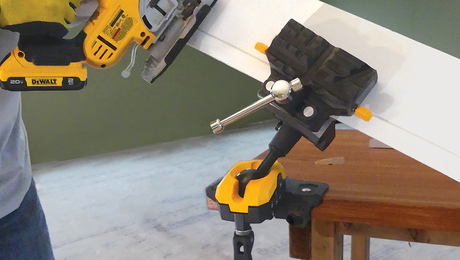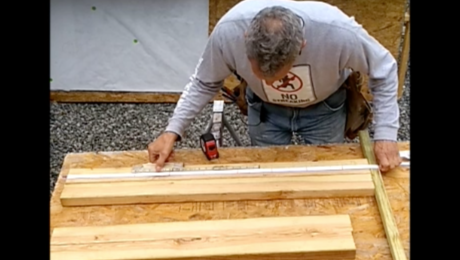*
I am replacing a row of cedar roof shingles over the flashing where it meets a wall. the previous shingles/shakes lasted for about six years.
I just installed the new ones and they are splitting and cracking already.
They are cut down to only 3 in. long, but so were the old ones. Instead of nailing right through the shingles should I have pre-drilled holes first?? Or, are there some other tips I need to know? Thank you . will appreciate any advice….CS
Discussion Forum
Discussion Forum
Up Next
Video Shorts
Featured Story

The IQ Vise has angled jaws, a simple locking mechanism, and solid holding power.
Highlights
"I have learned so much thanks to the searchable articles on the FHB website. I can confidently say that I expect to be a life-long subscriber." - M.K.
Fine Homebuilding Magazine
- Home Group
- Antique Trader
- Arts & Crafts Homes
- Bank Note Reporter
- Cabin Life
- Cuisine at Home
- Fine Gardening
- Fine Woodworking
- Green Building Advisor
- Garden Gate
- Horticulture
- Keep Craft Alive
- Log Home Living
- Military Trader/Vehicles
- Numismatic News
- Numismaster
- Old Cars Weekly
- Old House Journal
- Period Homes
- Popular Woodworking
- Script
- ShopNotes
- Sports Collectors Digest
- Threads
- Timber Home Living
- Traditional Building
- Woodsmith
- World Coin News
- Writer's Digest


















Replies
*
the last course of shingles meeting a vertical wall is traditinally covered with a ((break flash))
in the past this would be a piece of lead covering a 1x6.. the lead was folded up under the sidewall shingles..this could be bent with a plank and a hammer....
so the last course of shingles would actually be two courses wide or ABOUT 11 inches..
nowadays we bend an attractive compression -fit break flash with a hem out of colored aluminum coil stock... and this covers the last course....
the break flash will also take the splash from the vertical wall, and your top course will last LONGER than the other courses, because it is protected...
*
The Last row I am speaking of was put over the flashing . I guess as a decorative piece.
*
... i know.. it's often done.. but it's not right..
and you can see the results...
if you pick up the flashing they were nailed on top of .. you can see some more resluts...it'll be wet under the flashing where the nails penetrated...
*Dr. Smith is right on the money....par for the course, near the stream,ajthe bogey man
*
Was that 3" long or 3" WIDE? The wall is at the top of the Roof?
The new ice-sheilds are fantastic for this sort of thing...but you have to pull up some roof. If it's at the top couldn't you double-flash, one under the last row and another OVER the whole thing, nailed to the wall under the siding but not to the roof?
*The last row of cedar is 3" long. Yes the roof comes off of a wall. like an overhang
*
I am replacing a row of cedar roof shingles over the flashing where it meets a wall. the previous shingles/shakes lasted for about six years.
I just installed the new ones and they are splitting and cracking already.
They are cut down to only 3 in. long, but so were the old ones. Instead of nailing right through the shingles should I have pre-drilled holes first?? Or, are there some other tips I need to know? Thank you . will appreciate any advice....CS
*
mike .. the new ice shields are fantastic... but they have no ultraviolet protection so they CANNOT be left exposed to daylight..
bend a break flash.. or lead in a break-board..